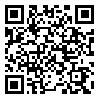Wed, Jul 16, 2025
[Archive]
Volume 17, Issue 1 (March 2021)
IJEEE 2021, 17(1): 1518-1518 |
Back to browse issues page
Download citation:
BibTeX | RIS | EndNote | Medlars | ProCite | Reference Manager | RefWorks
Send citation to:



BibTeX | RIS | EndNote | Medlars | ProCite | Reference Manager | RefWorks
Send citation to:
Benbouhenni H, Boudjema Z, Belaidi A. Direct Power Control With NSTSM Algorithm for DFIG Using SVPWM Technique. IJEEE 2021; 17 (1) :1518-1518
URL: http://ijeee.iust.ac.ir/article-1-1518-en.html
URL: http://ijeee.iust.ac.ir/article-1-1518-en.html
Abstract: (3786 Views)
The paper presents a super-twisting sliding mode (STSM) regulator with neural networks (NN) of direct power command (DPC) for controlling the active/reactive power of a doubly-fed induction generator (DFIG) using a two-level space vector pulse width modulation (2L-SVPWM). Traditional DPC strategy with proportional-integral (PI) controllers (DPC-PI) has significantly more active/reactive power ripples, electromagnetic torque ripple, and harmonic distortion (THD) of voltages. The proposed DPC strategy based on a neural super-twisting sliding mode controller (NSTSM) minimizes the THD of stator/rotor voltage, reactive/active power ripple, rotor/stator current, and torque ripples. Also, the DPC method with NSTSM controllers (DPC-NSTSM) is a simple algorithm compared to the vector control method. Both methods are developed and programmed in Matlab on a 1.5MW DFIG-based wind turbines. The simulation studies of the DPC technique with the NSTM algorithm have been performed, and the results of these studies are presented and discussed.
Type of Study: Research Paper |
Subject:
Robust Control
Received: 2019/06/05 | Revised: 2020/06/09 | Accepted: 2020/06/16
Received: 2019/06/05 | Revised: 2020/06/09 | Accepted: 2020/06/16
| Rights and permissions | |
 |
This work is licensed under a Creative Commons Attribution-NonCommercial 4.0 International License. |








